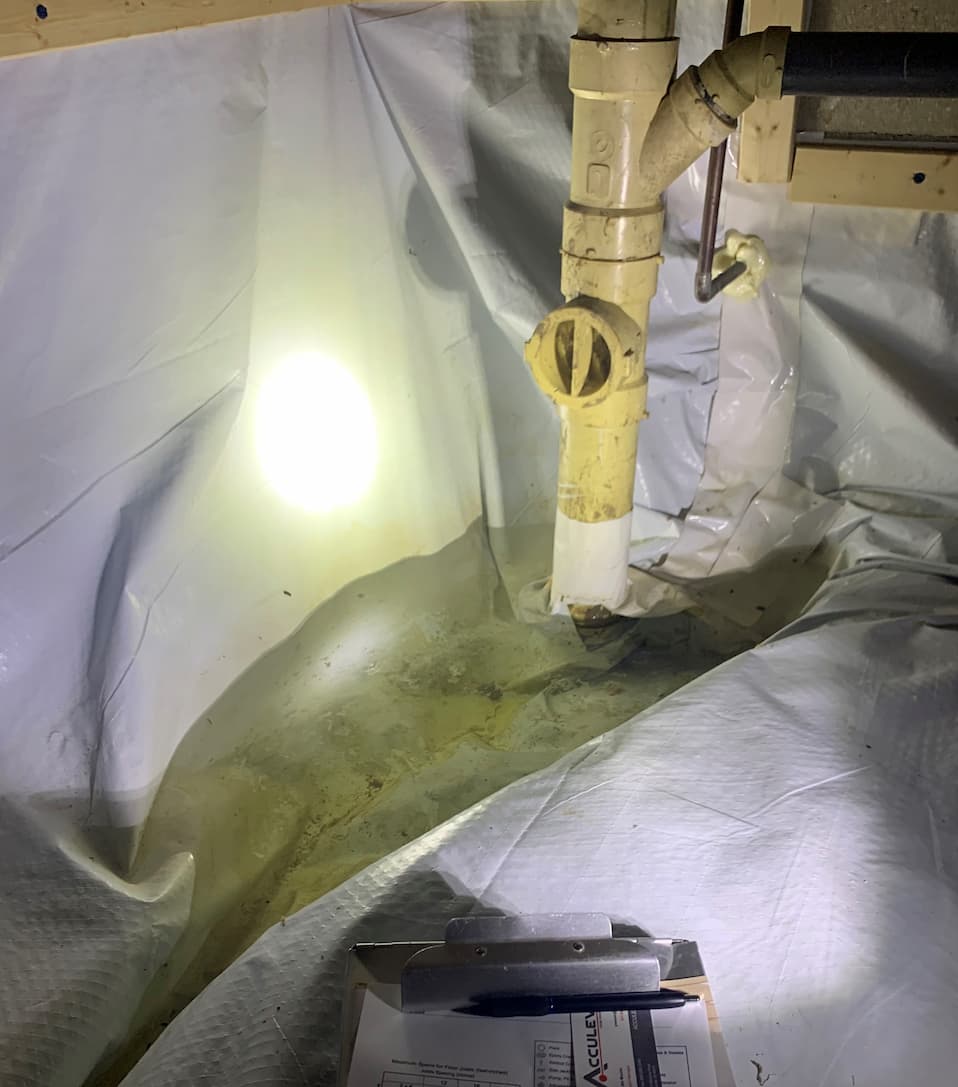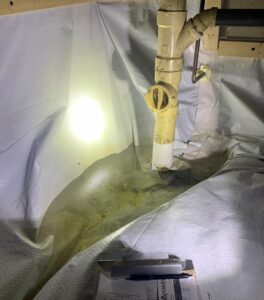Why Encapsulation Should Always Include Water Drainage

Homeowners are often trapped between two conflicting needs. You know you need to schedule annual maintenance tasks and make needed repairs as promptly as you can. After all, these are essential steps to maintaining your home’s resale value for the future. But you also know that money is a limited resource. You need to be cautious about digging into your emergency savings whenever you need to make repairs
So it might seem like a smart move, skipping water drainage and going directly into encapsulation. But that encapsulation is likely to fail, or need to be removed- and there’s a good chance it will become an expensive mistake.
At Acculevel, we’ve been experts in foundation repair and home waterproofing since our start in 1996. So far, we’ve helped more than 35,000 homeowners reestablish their basements or crawl spaces as clean and dry areas for storage (or more).
We understand your desire to stay on budget. But bypassing water drainage can be a costly and ill-advised shortcut. In this article, we’re going to explore what can happen when an area is encapsulated without first installing water drainage.
Encapsulation is Not a Type of Waterproofing
When you encapsulate a basement or crawl space, you are lining the space with a thick layer of material. This liner can be made out of vinyl, plastic, or other, similarly slick, material. Acculevel uses a woven liner made of 100% virgin resin polyethylene.
Basement vs. Crawl Space: basement encapsulation only covers the walls of the basement. Crawl space encapsulation covers both the walls and the floor. This is because crawl spaces don’t have a true floor- they’re open directly to the dirt under the home. The encapsulation is needed to block water, vapors, and other gases from oozing up through the soil.
What is the Purpose of Encapsulation?
The goal of encapsulation is to keep water that comes through the foundation from getting into the space being used. This is why encapsulation is highly recommended to homeowners who are planning to finish their basement. The liner will protect the insulation, drywall, and other furnishings from water that penetrates the basement walls.
In a crawl space, encapsulation plays an essential role in protecting the home’s wooden flooring structure. Water that seeps through the foundation- or through the dirt “floor”- can pool in the crawl space. This moisture leads to wood decay in the flooring components, compromising the stability of the structure.
For both basements and crawl spaces, encapsulation is used to limit the amount of moisture in the area. Moisture doesn’t just decay wooden components; it feeds biological growth like mold, bacteria, and viruses.
Why Isn’t Encapsulation a Type of Waterproofing?
Encapsulation is a barrier that physically blocks water from a space. It doesn’t interact with the water intrusion. It won’t keep the water from coming into your home like crack repairs can. And it doesn’t do anything to collect or remove the water from your space, like drainage and a sump pump would.

This photo was taken by an Acculevel project advisor during an in-home assessment. The basement has been encapsulated, but not waterproofed. You can see water has leaked in and collected on top of the encap material.
Why Is Water Drainage a Necessary Step Before Encapsulation?
We will strongly urge you (some might even say push you) to install waterproofing before encapsulation because we truly have your best interests at heart.
Water Pressure Damages Foundations
Water that seeps through your foundation walls is a clear sign that hydrostatic pressure is pushing against your foundation. Installing water drainage is a crucial part of the repair we recommend; it relieves the pressure building up by releasing it through a functioning drainage system.
If hydrostatic pressure goes unchecked, it will lead to cracked or bowing walls. These are a serious threat to your home’s structural stability. A bowed wall will become a collapsed wall if it’s ignored.
And if encapsulation is covering this cracked and bowing wall? You won’t be able to see it, so it won’t be detected until it’s clearly visible from the outside of your home. By that point, the repairs will be more significant, costing more. And that’s without considering the fact that your encapsulation will have to be removed so the wall can be fixed.

This photo was taken by an Acculevel project advisor during a free in-home assessment. If this wall were covered with encapsulation, it might have been much worse before it was noticed.
Water Flows Where It Likes
It will only take one flooding event to overwhelm your encapsulation. If the water comes in through your foundation and nothing is removing it? It’s eventually going to collect until it breaches the encapsulation. Water will eventually seep under the liner, find seams, and work its way inward.
Once the encapsulation is compromised, your basement finishes are wet (or your crawl space is now a pool). And you know what water in a dark place does: it feeds mold, mildew, bacteria, and other unwanted biological growth.
Again, repairing this damage will require removing the encapsulation you paid for. You’ll have to install water drainage, then re-do the encapsulation. All of this will cost you more money – and contractors don’t generally provide a warranty for encapsulation without water drainage.
Full disclosure: Acculevel cannot be acquainted with every contractor or their policies. But our known competitors (and Acculevel itself) will not guarantee encapsulation if it’s installed in a space without properly functioning drainage.

This photo was taken by an Acculevel crew member after installing water drainage and a sump pump system in a homeowner’s basement.
Additional Resources
We’ve referenced a number of common foundation problems in this article. If you have questions about any of these, we have more information to share!
Do you have questions about:
- Crack repair? We explain why we believe epoxy is the best repair method.
- Bowing wall repair methods? The repair method for bowing or buckling walls depends on the severity of the damage.
- Air quality? This article details the health risks and implications of mold.
Want additional information about waterproofing and encapsulation in a basement?
- We explore basement water drainage options and costs.
- This article provides a detailed look at how encapsulation is installed.
If your home has a crawl space, we have you covered!
- Geochannel is the ideal water drainage system for a crawl space.
- We walk you through encapsulation and its costs, here.
Need an Experienced Contractor to Evaluate Your Foundation?
If you live in Indiana or the surrounding areas, call Acculevel at 866-669-3349. We’ll schedule an appointment with one of our expert project advisors, who will perform a thorough review of your home, foundation, the basement and/or crawl space.
They will review their findings with you, discuss what repairs are necessary to meet your goals, and help you determine the whole-home solution to keep your house healthy and strong.
Do you prefer written communication? Our friendly call center representatives always leave a voicemail if no one answers our call, because most of us don’t answer “unknown” calls on our cell phones. But if texting or email is what you prefer, we are happy to accommodate you. Let us know that, when you complete our online form!
If you don’t live in our service area, please use our free guide to questions you should ask a contractor. This document reviews potential red flags, what to check when meeting with repair companies and contractors, and will help you feel more confident and prepared for the home repair process. Always verify that the person working on your property is properly insured and accredited by the Better Business Bureau.
